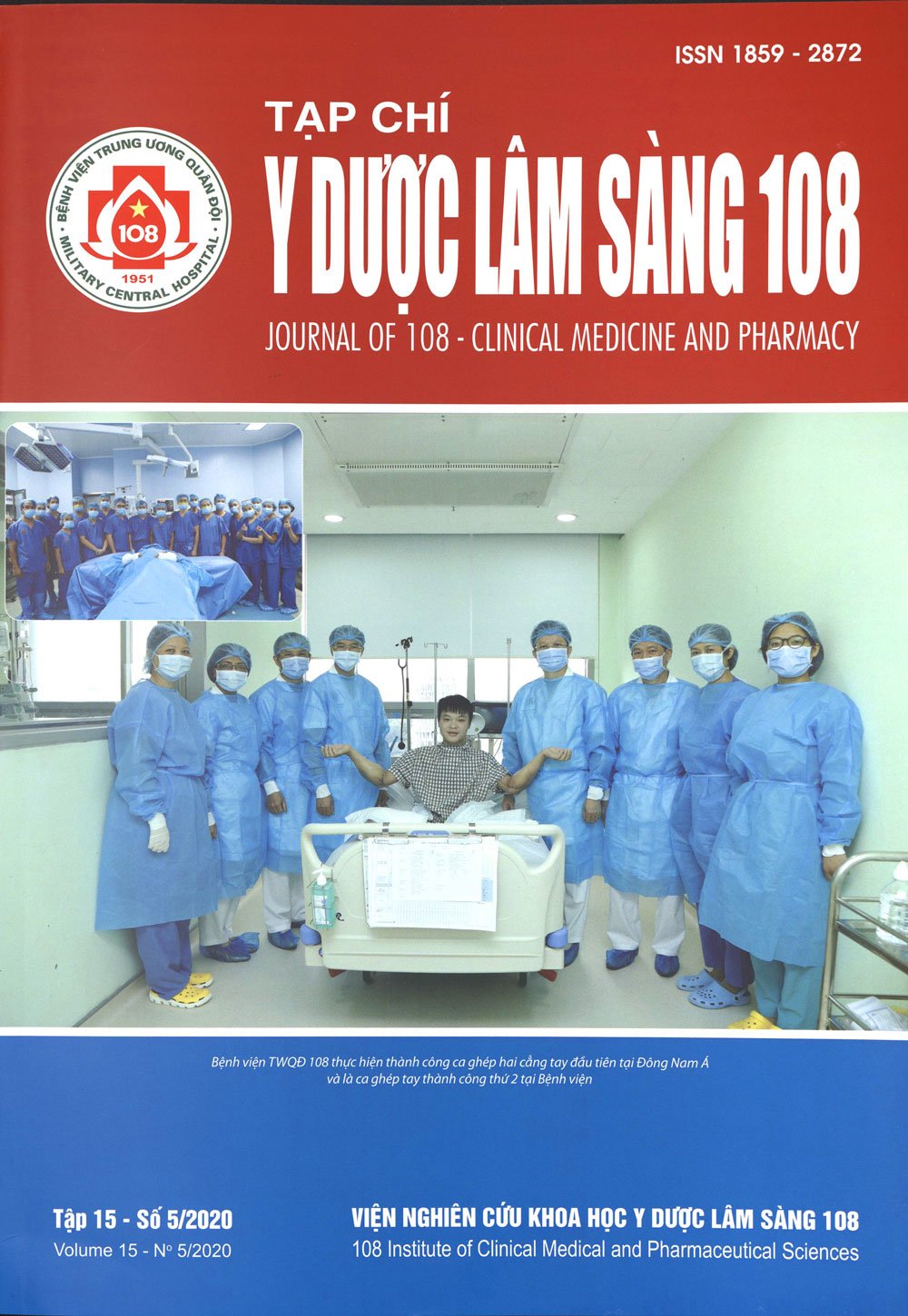Assessment of the application of lateral arm free flap in oral reconstruction after cancer ablation
Main Article Content
Keywords
Abstract
Objective: To assess the results of application of lateral arm free flap (LAFF) in reconstruction of defects in the oral cavity following cancer ablation. Subject and method: The study included 61 patients (46 male, 15 female, mean age 57.05 range 27 - 77 years. Sixty one LAFF were harvested to reconstruct caused by the dissection of malignant tumors of the oral cavity. Defects included one third tongue 5/61 (8.16%), hemitongue 32/61 (52.46%), two third tongue 32/61 (52.46%), buccal defect 7/61 (11.47%) and 1/61 (1.63%) case with flour defect. Flap sizes ranged from 5 × 10cm to 7 × 20cm, average: 5.87 x 14.54cm. Result: The flap was successful in 60 (98.36%) patients and was lost in one (1.64%). The donor site was closed directly in 56 patients, needed skin graf in ten. There was no significant complication at the donor sites. Follow-up for 24 months in 47 patients the speech was normal and near-normal in 97.2% patients and the diet was unrested in 88.9%, soft in 11.1% patients. Conclusion: The lateral arm flap can be considered safe and versatile for small to moderated-sized defects in the head and neck, especially in oral cavity.
Article Details
References
2. Nguyễn Tài Sơn (2012) Đánh giá kết quả sử dụng vạt cánh tay ngoài tự do trong điều trị một số dạng tổn khuyết vùng hàm mặt. Tạp chí Y dược lâm sàng 108, Số đặc biệt, tập 4, tr. 124-128.
3. Brown JS, Rogers SN, Lowe D (2006) A comparison of tongue and soft palate squamous cell carcinoma treated by primary surgery in terms of survival and quality of life outcomes. Int J Oral Maxillofac Surg 35: 208-214.
4. Brown L, Rieger JM, Harris J, Seikaly H (2010) A longitudinal study of functional outcomes after surgical resection and microvascular reconstruction for oral cancer: tongue mobility and swallowing function. J Oral MaxillofacSurg 68(11): 2690-2700.
5. Chang E, Ibrahim A, Papazian N, Jurgus A, Nguyen A, Suami H, Yu P (2016) Perforator mapping and optimizing design of the lateral arm flap: Anatomy revisited and clinical experience. Plastic and Reconstructive Surgery 138: 300-306.
6. Marques Faria JC, Rodrigues ML, Scopel GP et al (2008) The versatility of the free lateral arm flap in head and neck soft tissue reconstruction: clinical experience of 210 cases. J PlastReconstrAesthet Surg 61: 172-179.
7. Pastars K, Zariņš J, Tars J, Skagers A (2018) Oral Reconstruction with free lateral arm flap analysis of complications and donor site morbidity for patients with advanced stage oral cancer. Proceedings of the Latvian Academy of Sciences, Section B: Natural, Exact, and Applied Sciences; 72: 268-272.
8. Siegel R, Ma J, Zou Z (2014) Cancer statistics. A Cancer Journal for Clinicians 64: 9-29.
9. Song XM, Yuan Y, J ao TZ et al (2007) Application of lateral arm free flap in oraland maxillofacial reconstruction following tumor surgery. Med Princ Pract 16: 394-398.
10. Thankappan K, Kuriakose M, Chatni S, Sharan R, Trivedi N, Vijayaraghavan S, Sharma M, Lyer S (2011) Lateral arm free flap for oral tongue reconstruction an analysis of surgical details, morbidity, and functional and aesthetic outcome. Annals of Plastic Surgery 66: 261-266
 ISSN: 1859 - 2872
ISSN: 1859 - 2872
